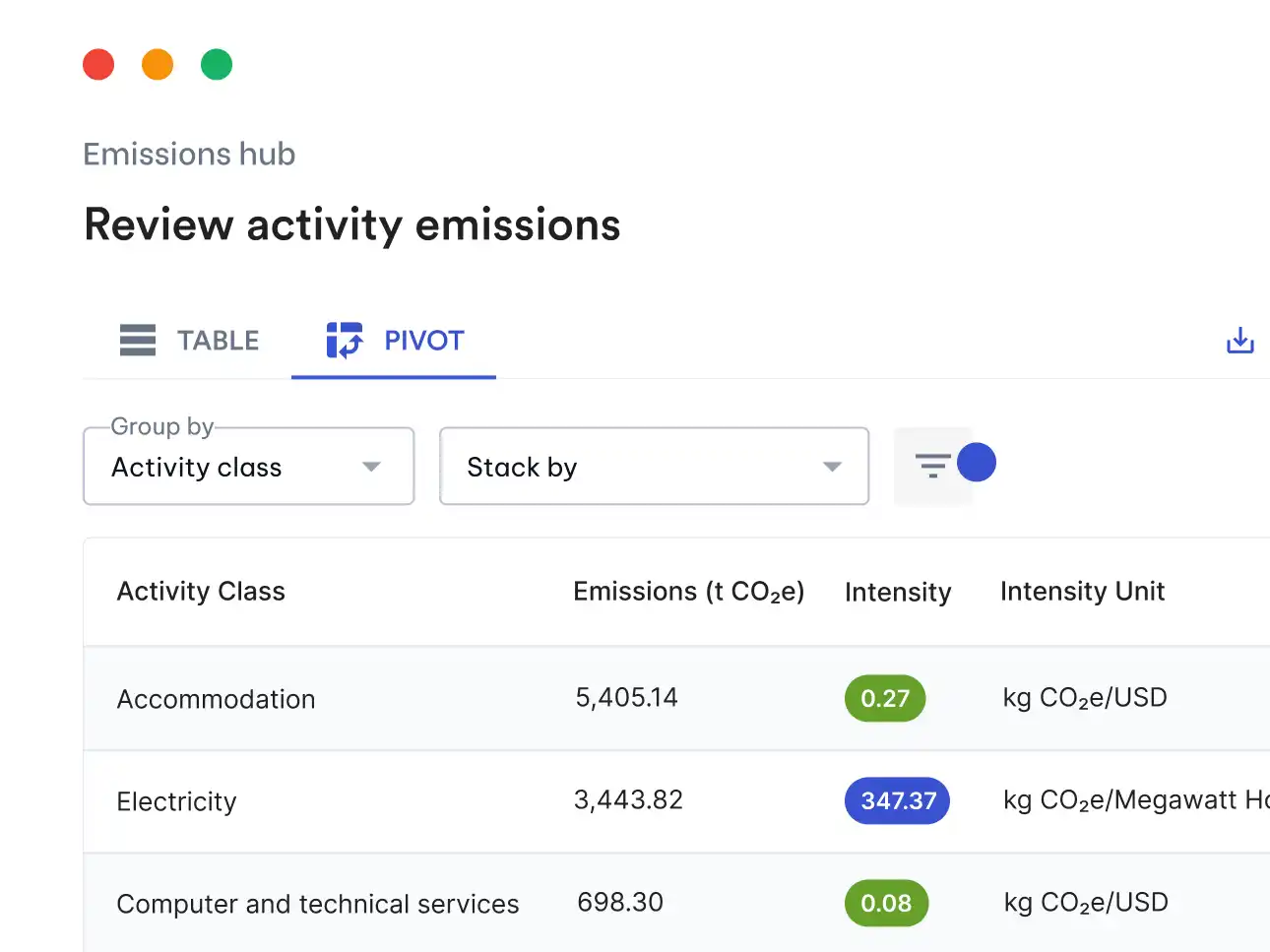Sustainability is no longer optional — it’s a core business strategy. As companies worldwide commit to reducing their greenhouse gas (GHG) emissions, the Science Based Targets initiative (SBTi) has become a leading framework for setting credible and science-aligned climate goals. SBTi provides clear, measurable pathways for organizations to cut emissions in line with global climate targets.
Why organizations set SBTi-validated targets
More companies than ever are committing to SBTi, recognizing the need to align their operations with climate science. As of January 2025, more than 10,000 organizations worldwide have set science-based emissions reduction targets through SBTi — a 29% increase from the previous year. On average, over 100 organisations commit to SBTi targets or make related pledges every week.
Setting an SBTi-validated target is not just about compliance — it’s a strategic move that benefits organizations in multiple ways:
Strengthening climate commitments
SBTi validation signals a company’s serious commitment to tackling climate change. Investors, customers, and employees are increasingly drawn to businesses that take sustainability seriously. Aligning with SBTi enhances brand reputation, builds stakeholder trust, and helps attract top talent.
Mitigating business risks
Climate-related risks are growing — from extreme weather disrupting supply chains to stricter regulations on carbon emissions. Companies with science-based targets are better prepared to navigate these challenges. By proactively reducing emissions, they future-proof their business against regulatory shifts and financial volatility linked to carbon pricing and sustainability requirements.
Driving efficiency and innovation
Reducing emissions isn’t just good for the planet — it’s good for business. SBTi targets push companies to improve operational efficiency, adopt cleaner technologies, and rethink resource usage. This focus on sustainability often leads to cost savings, improved supply chain resilience, and greater competitive advantage.
Improving access to capital and markets
Investors and financial institutions increasingly prioritize climate-aligned investments. Companies with SBTi commitments may find it easier to secure funding and meet sustainability requirements for major contracts. Many markets and governments are also introducing sustainability-driven procurement policies, making SBTi alignment a key factor in business growth.
Why tracking SBTi in the supply chain matters
Most organizations’ emissions don’t come from their direct operations but from their supply chain. On average, more than 80% of a company’s total emissions stem from its suppliers. This means that even if a company reduces its own operational emissions, it won’t reach its climate goals unless it tackles supply chain emissions.
Tracking SBTi commitments within the supply chain is critical for making real progress toward net-zero targets. Here’s why:
Strengthening supply chain resilience
Climate risks don’t stop at a company’s doors — they affect suppliers, logistics partners, and raw material sources. A supply chain that is aligned with SBTi targets is better equipped to withstand regulatory changes, resource shortages, and climate-related disruptions.
Driving industry-wide innovation
Engaging suppliers in SBTi commitments encourages collaboration and innovation. Companies that support their suppliers in setting science-based targets can drive advancements in product design, materials sourcing, and logistics, leading to more sustainable and cost-effective operations across the value chain.
Meeting stakeholder expectations
Regulators, investors, and customers increasingly demand transparency on supply chain emissions. Companies that proactively track and reduce their Scope 3 emissions (indirect emissions from their supply chain) not only stay ahead of regulations but also strengthen their market position by demonstrating leadership in sustainability.
How Avarni helps you track SBTi coverage in supply chains
Understanding which suppliers have committed to SBTi targets is essential — but manually tracking and analyzing this data is a massive challenge. Avarni’s SBTi Targets feature simplifies this process by automatically identifying which of your suppliers have set science-based targets.

With real-time insights and automated data aggregation, Avarni allows you to assess coverage, identify gaps, and prioritize supplier engagement. Instead of sifting through endless reports, you get instant clarity on your supply chain’s climate commitments — helping you take faster, data-driven action toward your net-zero goals.
Want to see how it works? Learn more about Avarni’s SBTi Targets feature.
Summary
- More organizations than ever are committing to SBTi – As of January 2025, over 10,000 companies have set science-based targets, a 29% increase from the previous year.
- SBTi commitments strengthen businesses – Companies align with climate science to enhance reputation, reduce risk, drive innovation, and improve access to capital.
- Supply chain emissions must be addressed – With over 80% of emissions coming from suppliers, tracking SBTi commitments in the supply chain is critical for meaningful carbon reductions.
- Avarni streamlines SBTi tracking – Avarni’s automated platform helps organizations easily identify supplier commitments, assess coverage, and drive strategic action.
NOTE: This article was originally published on 29-February-2024, and has been updated to reflect the latest SBTi data.





